Tasting your own grown fresh tomato is an overwhelming experience. As tomatoes that are grown hydroponically are not only tastier as compared to soil-grown tomatoes but you can also enjoy them all year long. They have a perfect appearance, firm flesh, tender skin, and delightful flavor and aroma. So, let’s learn about growing tomatoes hydroponically at home?
Table of Contents
Hydroponic Tomatoes
Hydroponics is a very efficient and popular way to grow several vegetables due to numerous advantages. Hydroponic systems allow plant production in water, which has essential plant nutrients dissolved in it. You can grow plants in controlled conditions – without any fear of insects, weeds or soil-borne diseases. Moreover, tomato plants not only grow faster in hydroponics but also produce a higher yield.
| Botanical Name: | Lycopersicon Esculentum |
| Optimal Temperature: | Day: 22–26 °C (70-79 °F) Night: 3-18 °C (58-65 °F) |
| pH: | 5.5 - 6.5 |
| Germination time & temperature: | 4–6 days; 20–30 °C |
| Growth Time: | 65 to 120 days after Planting (Varies in Varieties) |
| Plant Spacing: | 40-60 cm (3–5 plants/m²) |
| Plant height & width: | 60–180 cm; 60–80 cm |
Growing Conditions for Tomatoes
1. Temperature
The favorable range to grow tomatoes is between 70 and 79 degrees Fahrenheit ( 21 – 26 °C) with full exposure of sunlight. The night temperatures of 13-18 °C (58-65 degrees Fahrenheit) encourage the fruit set. The plants stop growing below 8-10 °C and the temperatures above 32 °C (90 degrees) cause floral abortion and poor fruit setting. Moreover, humidity should vary between 40– 50%.
2. Hydroponic Nutrients
Most of the varieties of tomatoes require a high level of nutrients like potassium and phosphorous. It also requires calcium supplement and other hydroponic nutrients for successful growth. The hydroponic nutrients for tomatoes include Calcium Nitrate – Ca(NO3)2, Potassium Nitrate – KNO3, Sulfate of Potash – K2SO4, Monopotassium Phosphate – KH2PO₄, and Magnesium Sulfate – MgSO₄ * 7H2O. The tomatoes also need around 54 elements in traces that include Iron – Fe, Manganese – Mn, Zinc – Zn, Copper – Cu, Boron – B, and Molybdenum – Mo.
A higher amount of nitrogen supports vegetative growth during the early stages of plants. The potassium is an important mineral needed to aid in fruit settings during the flowering stage. Moreover, the tomato plant grows well with a pH level between 5.5 and 6.5.
Basic nutrients will only give you 12-16 elements. You can also foliar spray your plants to enhance nutrient uptake. Ocean Solution provides around 90 elements and the plants take what needs even at the micro level.
3. Light
Tomatoes require a lot of lighting but can thrive with at least 7 hours of sunlight/day. However, very strong rays of sunlight during a hot day may cause heat stress that should be avoided.
For maximum fruit production, the mature plant needs 16-18 hours of light and 8 hours of darkness for respiration. You can use LED grow lights to grow tomatoes indoors.
4. Water and Aeration
Make arrangements for air systems like air pumps for the plant to thrive. Similarly, water supplied to the crop must be pure. Deeply study how the presence of certain minerals can affect plant growth before supplying water to it.
Tomato can moderately tolerate salinity and is suitable to be grown in areas with less availability of pure freshwater. At the fruiting stage, higher salinity levels enhance the quality of the fruits.
Best Hydroponic Tomato Varieties
Tomatoes can be classified into thousands of varieties by their size, shape, color, taste, harvest time and purpose (pickling, slicing or sauce).
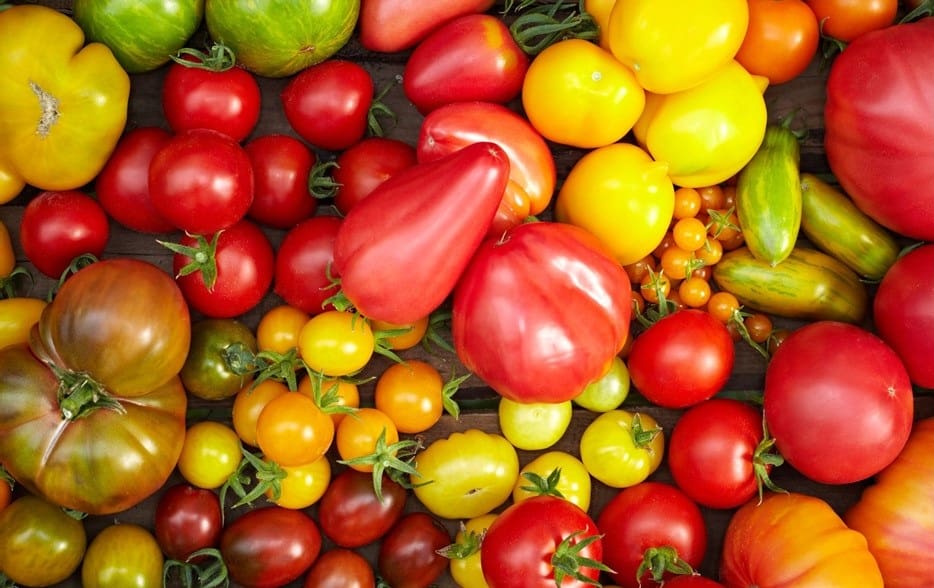
You can find tomatoes in different colors including orange, red (Picolino), plum (Flavorino), yellow, cream, pink, white, purple to black, green, and zebra-striped multi-colors. Currant tomato is the smallest variety. Tomatoes also vary by when they can be harvested: early season (from 40-60 days); midseason (60-80 days); and late season (80 or more days). Some tomatoes are picked green and ripened indoors.
So what is the best variety for hydroponics?
Every tomato variety will do good in hydroponics, but you should choose on the basis of several other factors. Large commercial hydroponics farms usually prefer smaller sized fruit (cherry and grape) while the beefsteak varieties (Quest, Trust, Match, Geronimo, Blitz) are the fruit of choice for the small growers.
If you are growing indoor and can control the temperature, you should choose an indeterminate tomato variety. These vine-like tomato plants grow, ripen fruit and set new ones all at the same time throughout the season indefinitely until killed by frost. Without any pruning, they can reach up to 12-14 feet. Most of these varieties rely on staking or trellis for support.
If you are growing in an outdoor system, use seasonal determinate tomato varieties that usually grow as bushes. You can grow them in small containers with minimal need for space.
Moreover, Choose your plants based on
- Length of your growing season (early, main crop, or late harvest)
- Size of the plant you can accommodate in your hydroponic system
- Want to stake or cage the plant or let it sprawl?
- How you intend to utilize the harvest? eating raw, cooking, pickling, canning, or drying. The cherry and beefsteak tomatoes are great for eating fresh.
Hydroponics Tomatoes Setup
For hydroponic gardening of tomatoes, the following components are must-have to set up a system.
- A reservoir filled with a nutrient solution.
- Nutrient pump and air pump to supply nutrients and air respectively to the plant roots.
- Another requirement is of growing media which holds roots and channelize water and nutrients to them. If you are using soil-less mix such as perlite and peat, then there’s no need to supply nutrients during initial stages, and fresh water is just enough. However, while using an inert grow media such as Rockwool, make sure to feed nutrients in all stages.
Hydroponics is a clean cultivation technique. It’s recommended to plant tomatoes directly from seeds as plants brought from outside are easily susceptible to pests and diseases.
You can use rockwool starter cubes to start seeds in a nursery tray. Soak the rockwool cubes in water (with a pH of 4.5) before using.
Keep tray covered in a moist and warm environment (20-25 degree Celsius) until the seeds begin to sprout.
Once seeds start sprouting, immediately remove the domes and place seedlings in a light source for 12 hours a day.
After roots appear at bottom of these starter cubes, transplant it to the hydroponic garden. There are many systems available, choose the right hydroponic system for tomato cultivation.
Following methods of hydroponics are commonly used to grow tomato in the home.
1. Deep Water Culture DWC
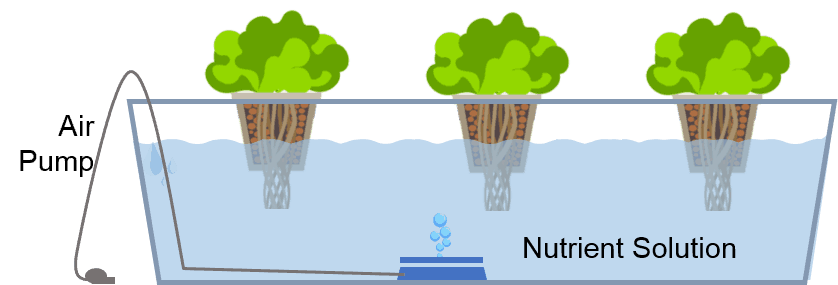
DWC Hydroponics systems work well for growing tomato plants. In this system, you place the plants in a net pot fitted in the reservoir with the roots submerged in the water. An air pump oxygenates the water constantly to ensure roots get an adequate amount of oxygen. Read more about setting up the system to grow tomatoes in the ultimate guide to DWC hydroponics here.
2. Kratky Method
This is the variation of Deep Water Culture and most basic form of hydroponics that uses no electrical equipment. You just need a bucket with net pot and nutrient solution to get started. The roots are submerged in the nutrient solution with an air gap left to expose some parts of roots to the air for oxygen. This method is not efficient for tomatoes. As you will need need to check the water and nutrient levels more frequently.
3. Dutch Bucket Hydroponic
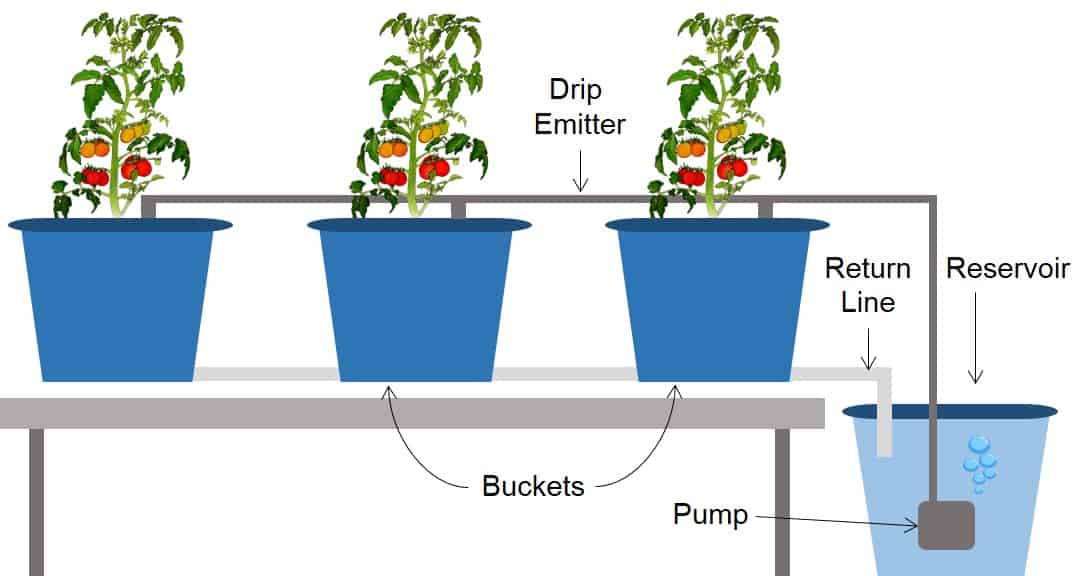
One of the common methods used for tomato plantation is Dutch Bucket that is a variation of the Flood & Drain hydroponic method. In this, the nutrient solution is pumped to plant roots through drip emitters and then drained back to the reservoir. The starter cube is placed in a hole of a 3-4 inches Rockwool cube, which in turn is placed on Rockwool slabs in a trough. Plant roots will grow down through those cubes.
Dutch buckets (or Bato Buckets) are specially used for tomatoes and other vining crops like cucumbers. Tomato plants can be trained vertically upward to create a tower of plants that are easy to monitor and harvest.
Check other appropriate hydroponics methods and how they work. Also, check Aeogarden hydroponic indoor kits to grow tomatoes easily and automatically.
Hydroponic Tomatoes Nutrient Solution
This is the best hydroponics fertilizer for tomatoes.
Tomato Fertilizer Powder 4-18-38
You can completely dissolve it in water with a little stirring. It has Nitrogen, Phosphorous, Potassium, Boron, Iron, Zinc and other essential trace elements required by tomatoes. The durable and resealable bag is designed to stand up without tipping or ripping. Growers have a great success with growing tomatoes as well as bell peppers, lettuce, cucumbers, and flowers with this as a base for hand mixed nutrients. Click here to check Price.
Planting & Care Instructions
- Set support structures before transplanting the plants to avoid any damage to roots.
- Remember to take wider trough than the slabs; also there should be 4 plants per slab.
- Plant both indeterminate and determinate tomatoes as well as late and early cultivars for a continuous and staggered harvest.
- Transplant the seedlings sized 10–15 cm after 3–6 weeks of germination in the night-time with temperatures no less than 10 °C.
- Avoid waterlogging around the collar of transplanted seedlings to prevent the risk of diseases.
- Choose the pump with higher gallons/hour rating so that plants farthest from the reservoir equally receive the nutrient solution.
- Choose a growing method (bush or single stem) when tomato plants reach a height of 60 cm. You can prune the auxiliary suckers to grow a single stem that favors fruit growth.
- Removing the bottom leaves of the main stem provide better aeration and reduce fungal infections.
- Fill the reservoir with the fresh nutrient solution every week. Irrigation needs to be adjusted as the plant grows. Mature plants will consume about 1 gallon of nutrient solution every day, while seeds will need less water.
- Carefully clean emitters for proper functioning, as they can be clogged over time.
- Adjusting pH levels is necessary. The pH of the nutrient solution indicates its level of acidity and alkalinity. If appropriate pH balance is not maintained, the plant is prone to various nutrient deficiencies or toxicities.
- Immediately remove the leaves on fruiting branches to enhance the nutrition flow to the fruits and expedite the ripening.
- If you are growing tomatoes indoors, you should hand pollinate to assist the flowers to produce fruit.
- Foliar spray of compost tea on tomatoes reduce the risk of diseases and certain nutrient-related problems.
Harvesting
Pick the tomatoes once they become firm and fully colored. The half ripe picked fruits keep ripening indoor. You can store the tomatoes for 2–4 weeks at 5–7 °C under 85–90 % humidity.
Accessories for Growing Hydroponics Tomato
Hydrofarm GCTR Tomato Trellis Garden on Wheels although not a soil-less hydroponic system, it’s probably the closest a lazy home gardener can get to feeding/water the plants via a water reservoir. You can convert into DWC system through some modification.
Vivosun grow tents offer the best value for grow tents to grow tomatoes indoors. Check full review about Vivosun grow tents here.
Although hydroponic gardening seems to trickier, once it’s practiced using proper knowledge and tools it can yield great results. So, make a hydroponic garden and enjoy fresh, juicy ‘homegrown tomatoes’ throughout the year.

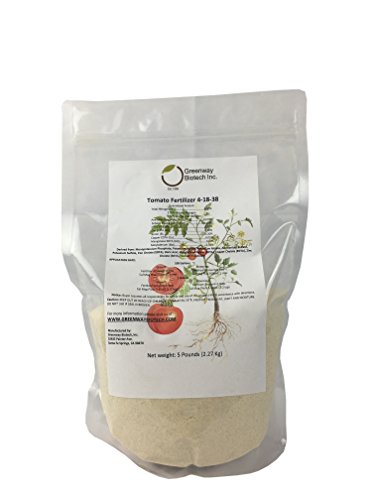
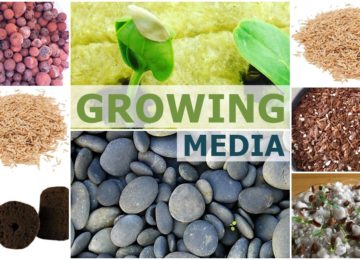
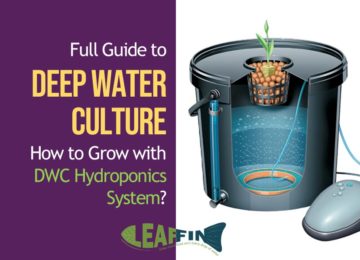
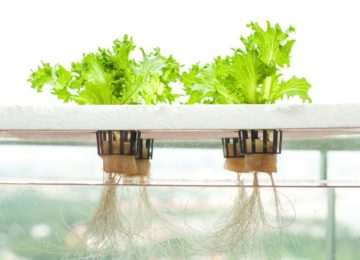
hydroponic deep water culture why cucumber are turning yellow and dying, have so many flowers, not one cucumber